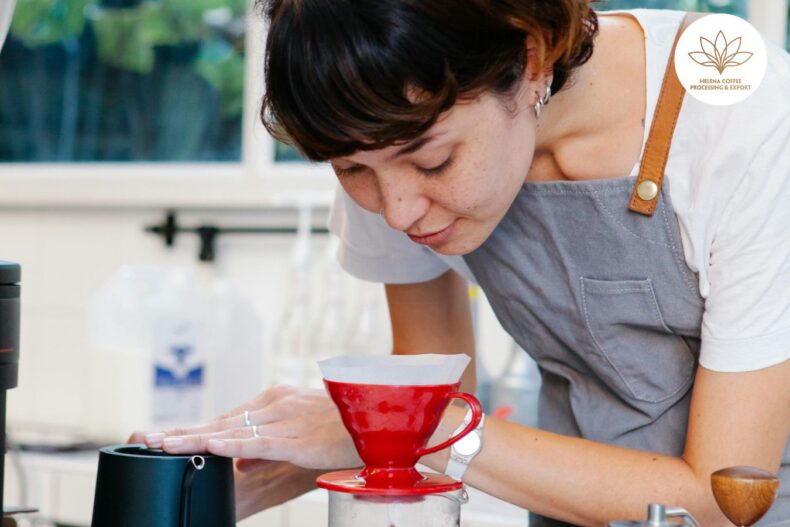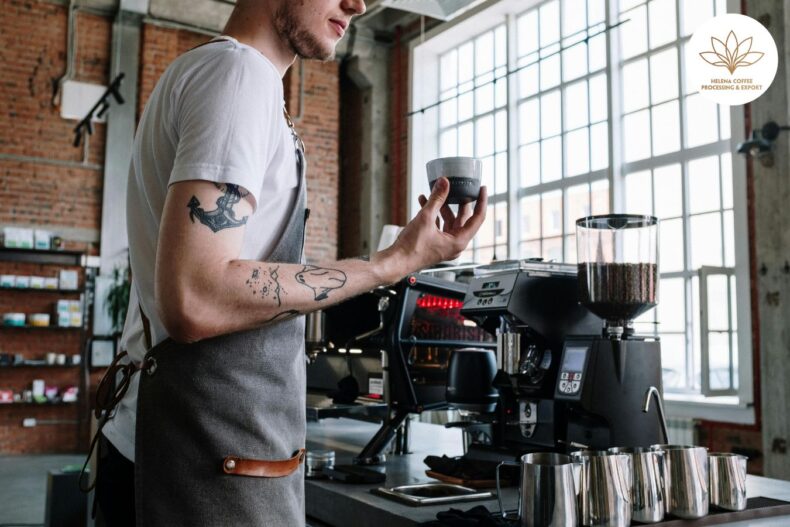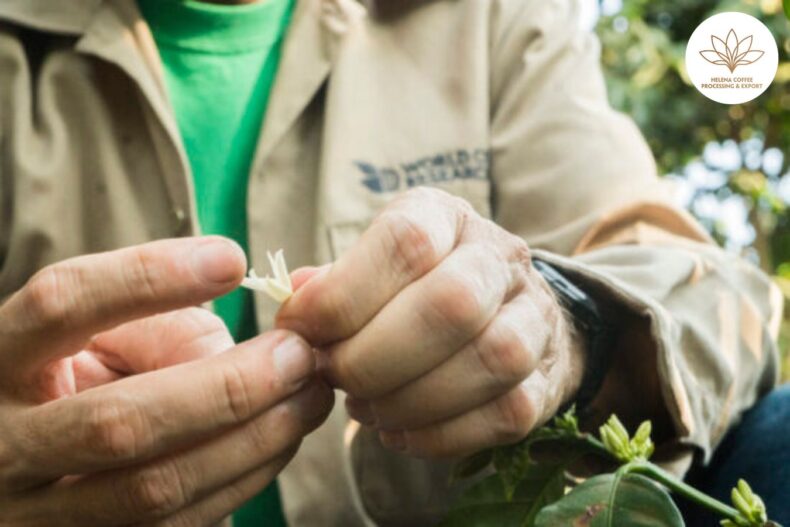
What is the customer journey and how can you use it to attract more customers to your coffee business?
When setting up a specialty coffee business, there are often obvious issues: product quality, top-notch machinery or brand image. Significant investments are often made in these aspects, but what happens to marketing?
In many cases, it is pushed to the background, the budget is not allocated to it in the first place and there are no plans to hire a specialist specifically for this area.
Lack of awareness of its relevance for the proper development of the project, insufficient funds or lack of time and specific knowledge are often the main reasons for this shortcoming.
In that sense, different tools and strategies can be wasted for the business to not only stay afloat but also grow at a good pace. To learn more about this, I spoke with Kim Ossenblok, better known as Kim Barista, founder of Online Coffee Studio and author of the book Al Grano, and Rick Morillas, a copywriter Senior level has a passion for specialty coffee. He continued reading and discovered what they had told me.
Marketing specialty coffee
For Rick, it’s nearly impossible for a business to succeed without investing in marketing . “ It is essential in any business, regardless of type, to attract new customers and create a brand. The specialty coffee sector is no exception. ”
Furthermore, it highlights the mistake of focusing on other aspects, no matter how important they may be, at the expense of marketing : if we don’t reach the public correctly, everything else will change. all have no effect.
To keep this from happening to you, you must remember some basic concepts, the first of which is the customer journey.
No matter what you sell, you must remember that customers will go through a psychological journey of thoughts and emotions that will ultimately cause them to take action and make a purchase. It can also be defined as the set of interactions a consumer has with your business during the purchasing process.
Why is the customer journey important to attract more customers?
Kim has been training all kinds of professionals in this field for many years and shares her own experience on how to establish connections with potential customers and engage with them. To understand it better, he proposed a very vivid image: an iceberg with the tip visible and a huge block of ice submerged in water.
“The problem is the image that people already know that specialty coffee exists and they buy it. Everyone who starts a cafe or coffee shop directs their marketing towards them; However, as this analogy shows, there are many more potential customers underneath and almost no one to guide those customers.”
Exactly, it has no more to do with talking to someone who doesn’t know that there are different types of coffee, very different from what they know, than with someone who makes their coffee in an AeroPress and has followed Follow the experts in this field for a while. .
“It’s important to know what myths or conversations each person has in mind to create connection and feeling,” Kim says. In that sense, how to get the message right? This is without a doubt the most complicated part, but if you clearly understand the stages and stages your prospect is going through, you will be able to establish adequate communication.
What are the stages and how to take them into account?
The customer journey can last just a few minutes, such as when you order food delivery, or several months if it involves choosing the master’s degree you will study; First, however, you must know who your ideal customer or buyer persona is.
“There are many customer journeys, but as a business, you have to determine which journey your customers will follow because it is impossible to determine the customer journey if you Unable to identify your ideal customer profile.
To connect with that buyer persona, there are a few strategies that can be very helpful in understanding where your audience is at: “What I would do first is try to do some kind of very simple survey, such as with a link in your Instagram bio. For example, when you simply ask the question: in regards to coffee, what are your biggest doubts, problems or concerns? If you have ten answers, those are ten topics you can use to create content.”
First stage: awareness
A large portion of your potential customers don’t even know they need good coffee because they simply don’t know it exists. To reach them, you must write content that is very easy to digest.
“When we started talking about specialty coffee, two years ago, we launched the very basics on different social networks, above all on YouTube. Additionally, I created a blog with basic concepts to start sparking interest and concern,” Kim said.
This stage also includes the moment your prospect realizes they have a problem or need, e.g.
- You are concerned about the environment and do not want to continue using capsules
- He was concerned about the interests of coffee growers and wanted to move away from the conventional circuit
- He tried a special coffee and he no longer liked the advertising
“You may have seen a documentary about the conditions under which people work on some coffee plantations, which may have raised your awareness and encouraged you to research other, sustainable ways to produce coffee with better conditions for workers and thus have reached a high level of expertise coffee ” Rick said.
If you already know what your ideal customer is worried about, at this stage, communicate in a way that makes them feel aligned with their daily thoughts.
The first stage of the customer journey
For each problem or need, each person will advise on the options available to solve it. When customers know that many people are looking for the same thing because they went online and found articles, videos, online stores , or ads, they are one step closer in their customer journey.
During this stage, it is necessary to talk with you about the weaknesses that motivated your search. In the example above, it would look like this:
- All pollution problems are caused by capsules
- Health effects of poor quality coffee
- How your purchasing choices can change the lives of small producers
Second phase: discovery
At this point, you can start educating the customer, which means giving them information about the solution you’re offering but without trying to sell them the product.
Rick gives an example to help you understand better: “Maybe you’ve been traveling and there’s a specialty coffee shop near your hotel.” You’ve never tried it before, but you find out that it has nothing to do with the type of coffee you drink every day. He liked it, he asked the barista where this coffee came from, how they made it and he decided to drink that coffee every day for the rest of the trip and even took a packet to drink at home when you return.
Accordingly, what should you focus your communication with your buyers on during this stage? Here it is necessary to simply explain the benefits of consuming specialty coffee or the different options you will find.
Third stage: training or learning
Here, consumers learned that specialty coffee existed and began looking for ways to:
- How to start consuming it
- How is it prepared?
- How to get it
In your communication, it’s time to go a little further: talk openly about coffee, your brand, and the benefits of consuming it. Step-by-step instructions, articles with the most common errors or online publications with easy-to-apply tips are suitable here. Kim’s advice at this point is to have an email list where you send valuable content instead of just sending promotional messages.
Fourth stage: election
We are engaged in sales! You now have a consumer who is aware of their needs, who has researched the market and knows the benefits and uses of different specialty coffee solutions. What can you do to make it choose you over your competitors?
You have to show them your value proposition. Those benefits set you apart and make you unique. At the same time, take into account your competition and the messaging they use to attract customers.
Fifth stage: acquisition
You should know that here the customer uses his most rational side and emotions are not as prominent as in other stages.
Based on Rick’s example, that person “makes sure that when he returns home, he continues to research specialty coffee, looks for a coffee shop that offers this experience in his city, and if possible, He will buy this coffee online . He began following cafes and businesses that sold specialty coffee and eventually became a regular consumer of the product.”
Meaning, he’s ready to buy, he’s evaluated different options, and he’s chosen you. Currently his concerns are:
- How much will I have to pay?
- What steps should I follow to make a purchase?
- How to get paid?
- How long will the order take?
If the previous stages have been completed then this will be easy. Build trust in your brand with excellent customer service, facilitate good shipping conditions and offer guarantees.
General recommendations
“Ideally, the person or team in charge of strategy is able to communicate fluently with those in the company who have direct contact with customers: commercial, customer service or after-sales teams. These groups have a lot of information about customers: what they ask, what they buy, why they don’t buy, etc. All of that information is important for identifying your ideal customer and building the customer journey. their products ,” Rick explained.
Kim emphasizes that “when you cannot devote enough time to this task, you must hire someone who understands the industry and knows what marketing and copying are in the coffee industry. “If you hire any agency that is not specialized, the message or connection will not be the same.”
Finally, he advises that “The expert you’re about to hire has the ability to literally put himself in your company’s shoes, and be someone who has the philosophy of the brand, who lives the coffee and who has can convey it even your customers.”
The customer journey is just one of the marketing concepts you should take into account when planning your brand strategy. While proper application is not the only success factor for a business, it is an ally that can make a difference.
Therefore, if you do not have the knowledge or readiness to design a suitable plan, investing in an industry professional with experience in the field will ensure that, despite the crisis and recession, your brand remains better positioned and you recover more easily.
FAQs:
- Explore The Journey Of Specialty Coffee In Liberia: Challenges And Potential
- How Specialty Coffee Production Unfolds in Liberia
- Does Blue Bottle The Weeknd Celebrity Specialty Coffee Brands Scene?


